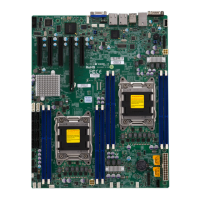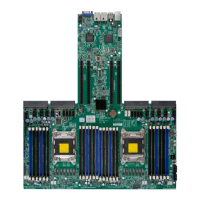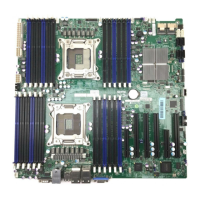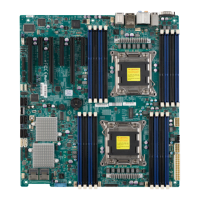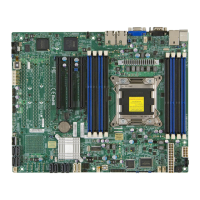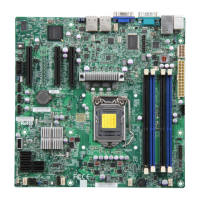Do you have a question about the Supermicro X9DRD-LF and is the answer not in the manual?
Introduces the motherboard, its key features, and retail box contents.
Explains the supported Intel processors and the C602 chipset capabilities.
Covers special features, PC health, ACPI, power management, Super I/O, and BMC controller functionalities.
Illustrates the system architecture for X9DRD-iF and X9DRD-LF models.
Covers warnings, battery handling, product disposal, and ESD safety.
Guides on installing processors, heatsinks, and memory modules.
Details motherboard mounting, standoffs, and PCI-E slot population.
Explains back panel I/O, front panel controls, various connectors, and onboard LEDs.
Details jumper configurations for system features like GLAN, CMOS, and ME.
Provides steps for troubleshooting common issues like no power or boot failure.
Addresses diagnosing system instability and memory-related problems.
Outlines procedures for seeking technical assistance and returning merchandise.
Introduces the AMI BIOS Setup utility and how to access and navigate its screens.
Details advanced setup, CPU, chipset, SATA, PCIe, and DIMM configurations.
Covers SMBIOS event logs, IPMI configuration, boot options, and security.
Lists beep codes for POST diagnostics and their corresponding error messages.
Guides on downloading and installing Supermicro drivers and utilities.
Explains how to use SuperDoctor III for system monitoring and remote management.
| IPMI LAN (RJ-45) port | Yes |
|---|---|
| USB 2.0 ports quantity | 4 |
| Ethernet LAN (RJ-45) ports | 2 |
| USB 3.2 Gen 1 (3.1 Gen 1) Type-A ports quantity | 0 |
| Maximum UDIMM memory | 64 GB |
| Number of DIMM slots | 8 |
| Supported RDIMM clock speeds | 800, 1066, 1333, 1600 MHz |
| Supported DIMM module capacities | 16GB, 1GB, 2GB, 32GB, 4GB, 8GB |
| PCI Express slots version | 3.0 |
| Memory voltage | 1.35, 1.5 V |
| Maximum RDIMM memory | 256 GB |
| Supported memory types | DDR3-SDRAM |
| BIOS type | AMI |
| ACPI version | 4.0 |
| BIOS memory size | 128 Mbit |
| RAID levels | 0, 1 |
| Supported storage drive interfaces | SATA III |
| On-board graphics card model | Matrox G200eW |
| Operating temperature (T-T) | 10 - 35 °C |
| Operating relative humidity (H-H) | 8 - 90 % |
| Supported QPI | 8 GT/s |
| Processor socket | LGA 2011 (Socket R) |
| Intel Xeon series | E5-2600 |
| Processor manufacturer | Intel |
| Ethernet interface type | Gigabit Ethernet |
| Component for | Server |
| Motherboard chipset | Intel® C602 |
| Sustainability certificates | RoHS |
| Depth | 330 mm |
|---|---|
| Width | 262 mm |
